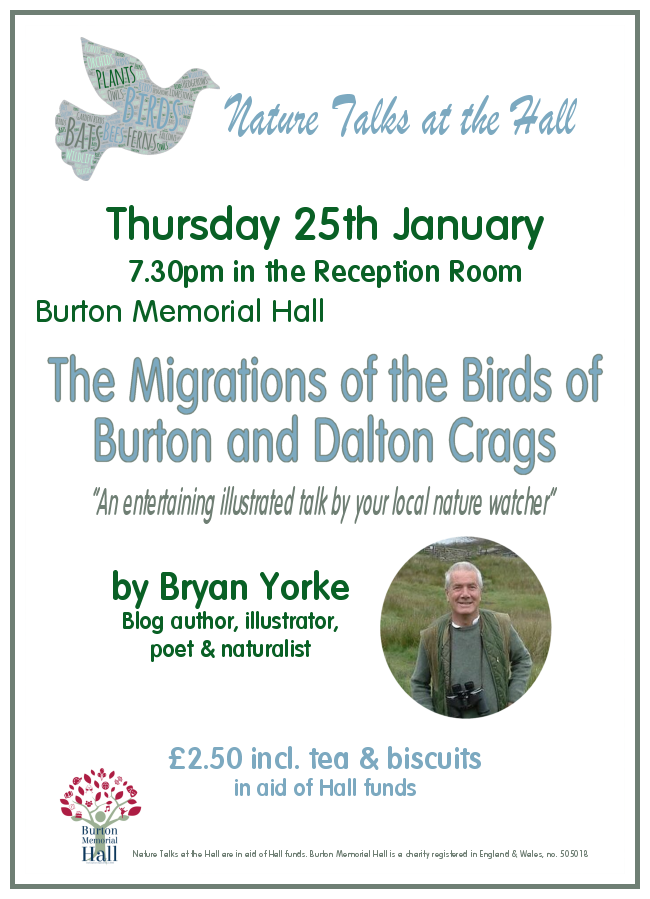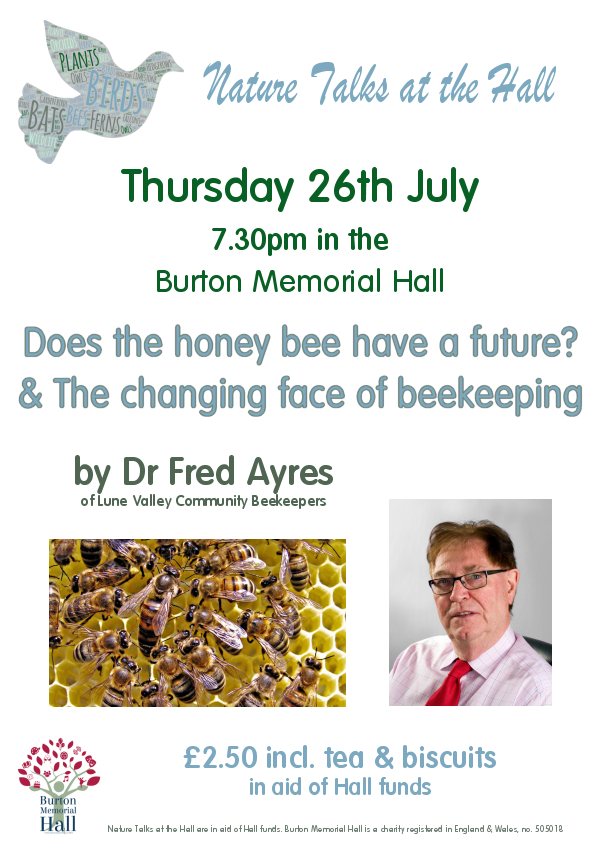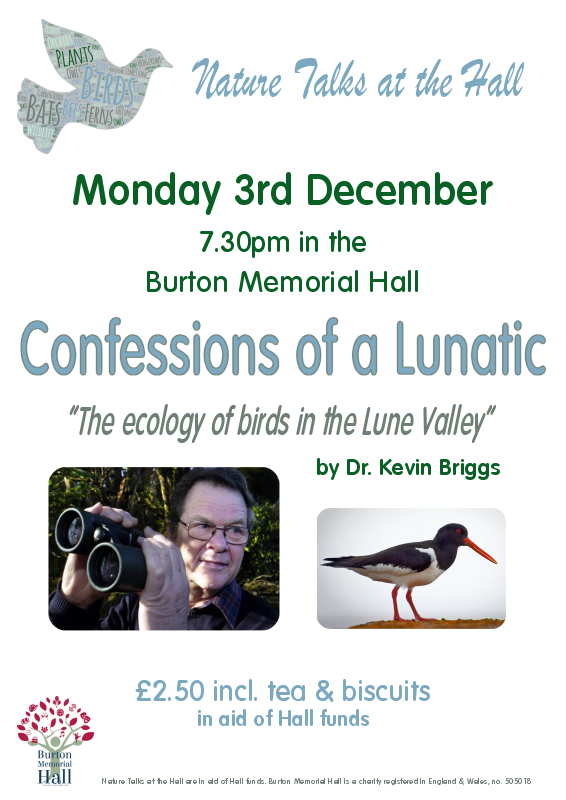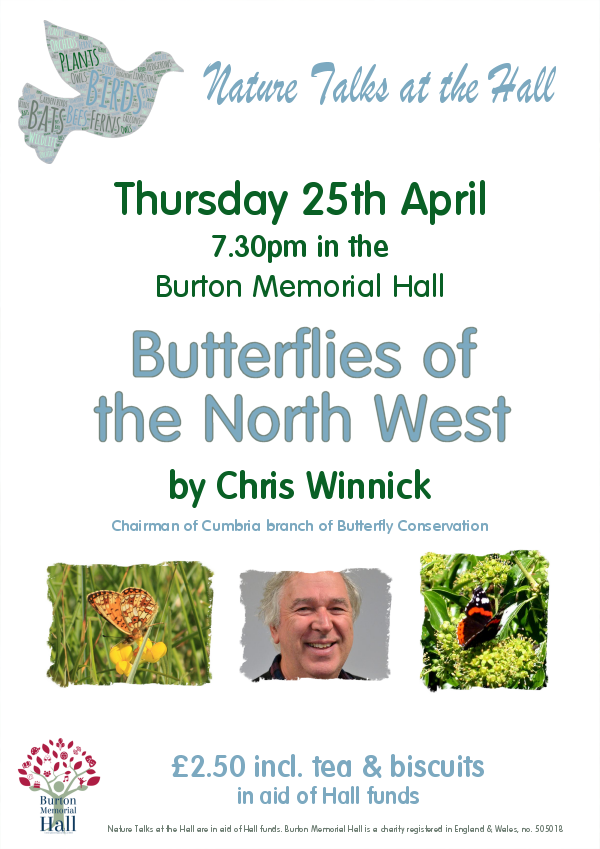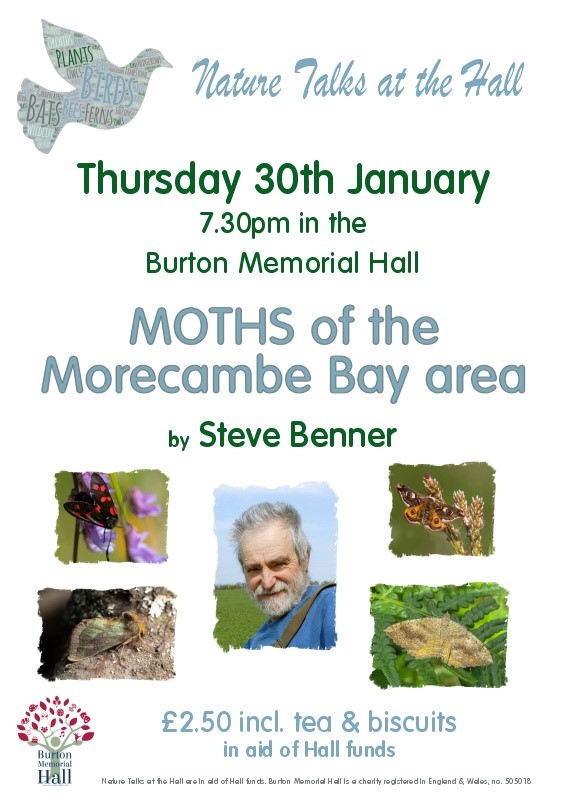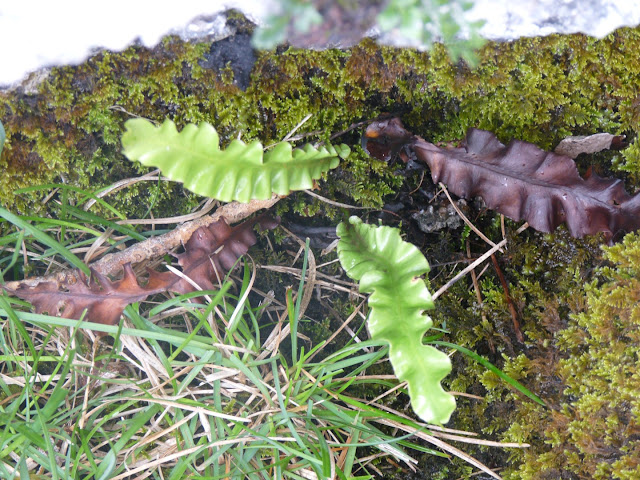 |
| And this is the "special one" a Scollie "Crispum" which I only found in late 2016 (Click over to enlarge) |
I decided today to have a change from orchids since it is quickly coming to a end with the Atrorubens! and a little window before all the hard work really starts, trying to work out things of what has been going on with the many varieties and hybrids etc. And I would suspect and it will be at least ten days before our "helleborines" are in flower and then I will be up studying both the "Purpurea" and the "Chorantha's". The helleborines are just at the point of starting to straighten out. Although I have been looking at photos of helleborines from down South in full flower from about a week ago, so you can see that ours are at least three weeks later (and that does not say that ours are late it will be right on cue for us).
So today I only have a hour or so spare I decided to quickly go and check some goodies which I could easily get good access to run with my timetable.
I checked out a couple of ferns and a whole lot of hypericums.
The fern I had particularly in mind was the new young (in fact baby 6") Scollie "Crispum" (shown in the photo header above) or if you do want it officially here we go Asplenium Scolopendrium "Crispum" or simply Harts Tongue Fern variety Crispum. And whilst on my way up the Crags called in to have a check on the Marginatum a lovely serrated edge specimen. So here are the photos:
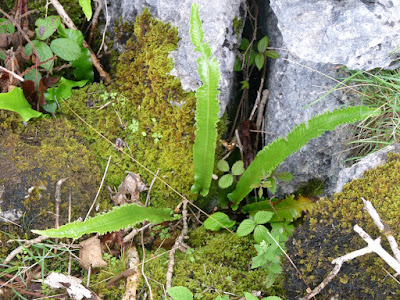 |
| Scollie "Marginatum" (Click over to enlarge) |
 |
| Showing the "Marginatum" frond close up (Click over to enlarge) |
Going back to the Crispum (header photo), it's of special interest to one or two people besides me and my fernie friend Alec because if this is proved to be a crispum which all the indicators are pointing in that direction - it will mean that 4 separate Crispum's have been found on Hutton Roof (of which 3 have been found in Dalton Crags). Not bad when you consider the average find for one of these crispum's is one in every twenty years! and Dalton alone will have produced three in two years already! The fronds on this one at present are only at about 6" so we will see how it comes out in a month or two on!
Whilst in Dalton Crags I thought I would check up on the Hypericums especially on the rare "Montanums" (the Pale St. John's Wort) Our third colony of Montanums has only produced two plants with flowerheads this year plus there are some two others which will not mature at all. But saying that it's still not so bad - read on please!.
Because I soon got a very pleasant surprise, when I started looking around and maybe some 30 yards away from the earlier mentioned when I found another four plants all in flower in separate but reasonably near to one another locations, looked good plants tall sturdy. Here is a photo of one of the flowerheads to give you some idea.
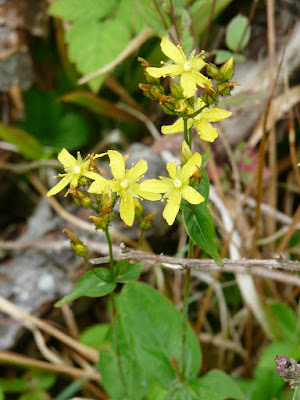 |
A new discovery today - More of the Montanums
(Click over to enlarge) |
So that was the start of my "Scollie" morning and there is more, because I thought maybe if I traverse the area I know which I call "Hypericum Way" in Dalton Crags, there would be more of the hypericums on offer and sure enough I was not to be disappointed. But just before that I had yet even more surprises when I found a small colony of the WHITE "Self Heal" plant flowering in Dalton Crags.
What made this more special for me was that I read a book several years ago written back in 1920 by Wilson and Wheeldon which gave old records of the local area and it was then mentioned that the rare White Self Heal (Prunella vulgaris) had been found "close to Dalton Hall" on the Dalton Hall Estate. So that was almost 100 years ago. Although I have found some already in Lancelot (a couple of years ago), but up until today had never found any on the Dalton Hall Estate so this means a lot because I wonder if it relates to the same colony which was recorded all them years ago by Wilson! definately worth considering..... here is a photo of today's find.
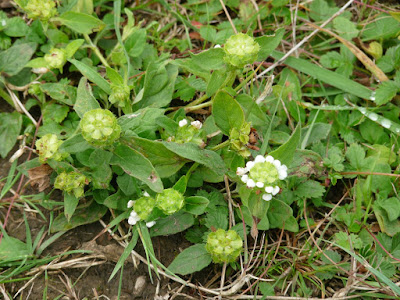 |
Rare "WHITE" Self Heal (Prunella vulgaris) on Dalton Crags today
Click over to enlarge) |
So following on I hit "Hypericum Way" and was not disappointed to find found "Tutson" (androsaemum), "Slender" (pulcrum), "Hairy" (hirsutum) and finally "Perforated" (perforatum)
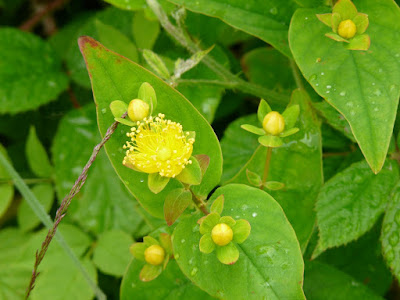 |
Tutson or (hypericum androsaemum) today (Click over to enlarge)
|
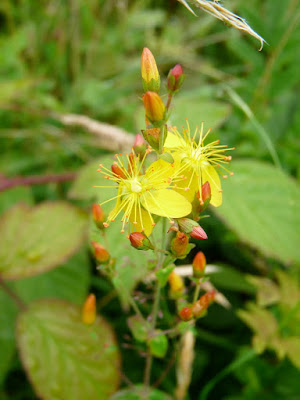 |
Slender or (hypericum pulcrum) today Click over to enlarge
|
 |
My favourite! Hairy or (hypericum hirsutum) today
Click over to enlarge. |


.jpg)
.jpg)




.jpg)




+(Small).jpg)
.JPG)


